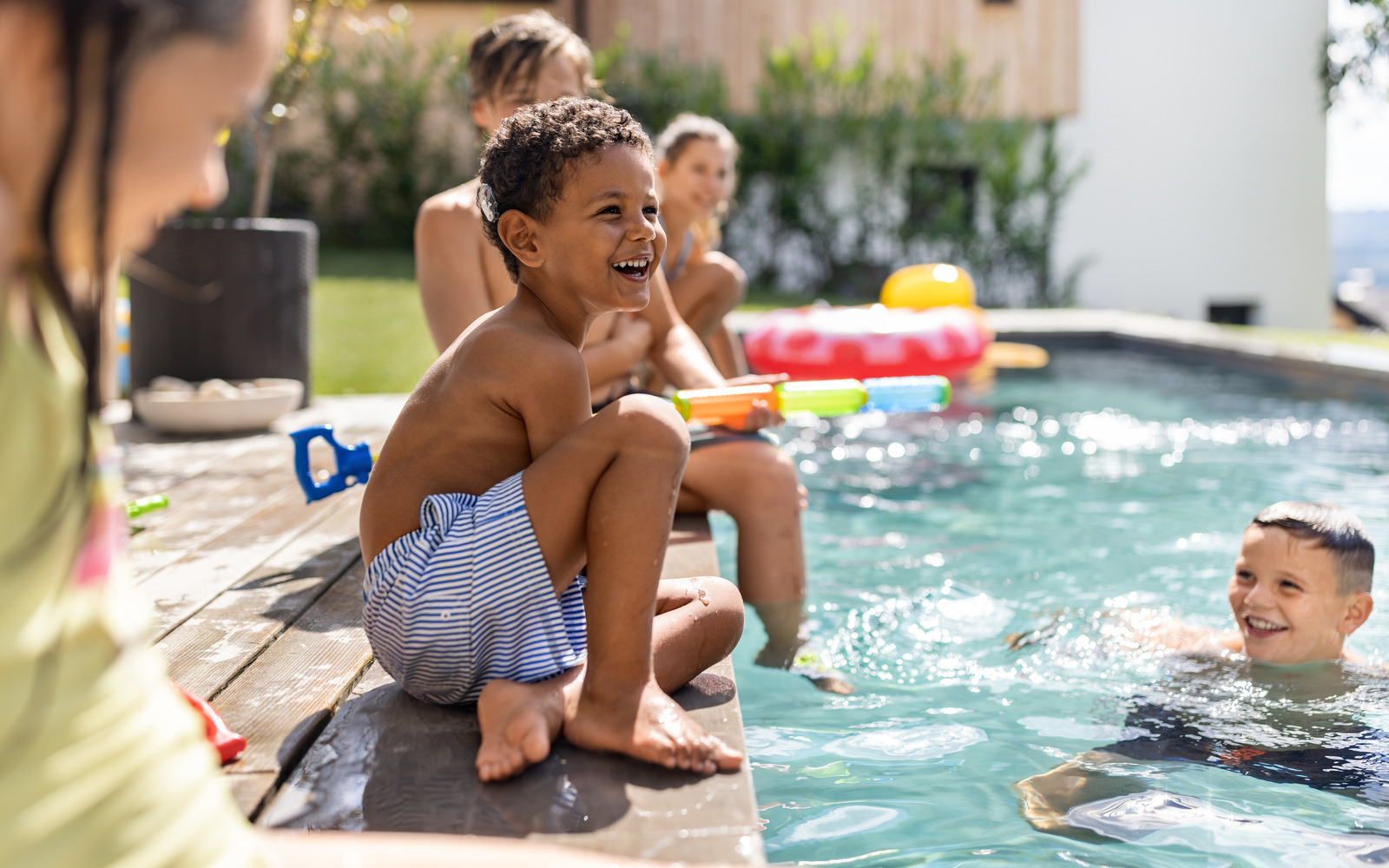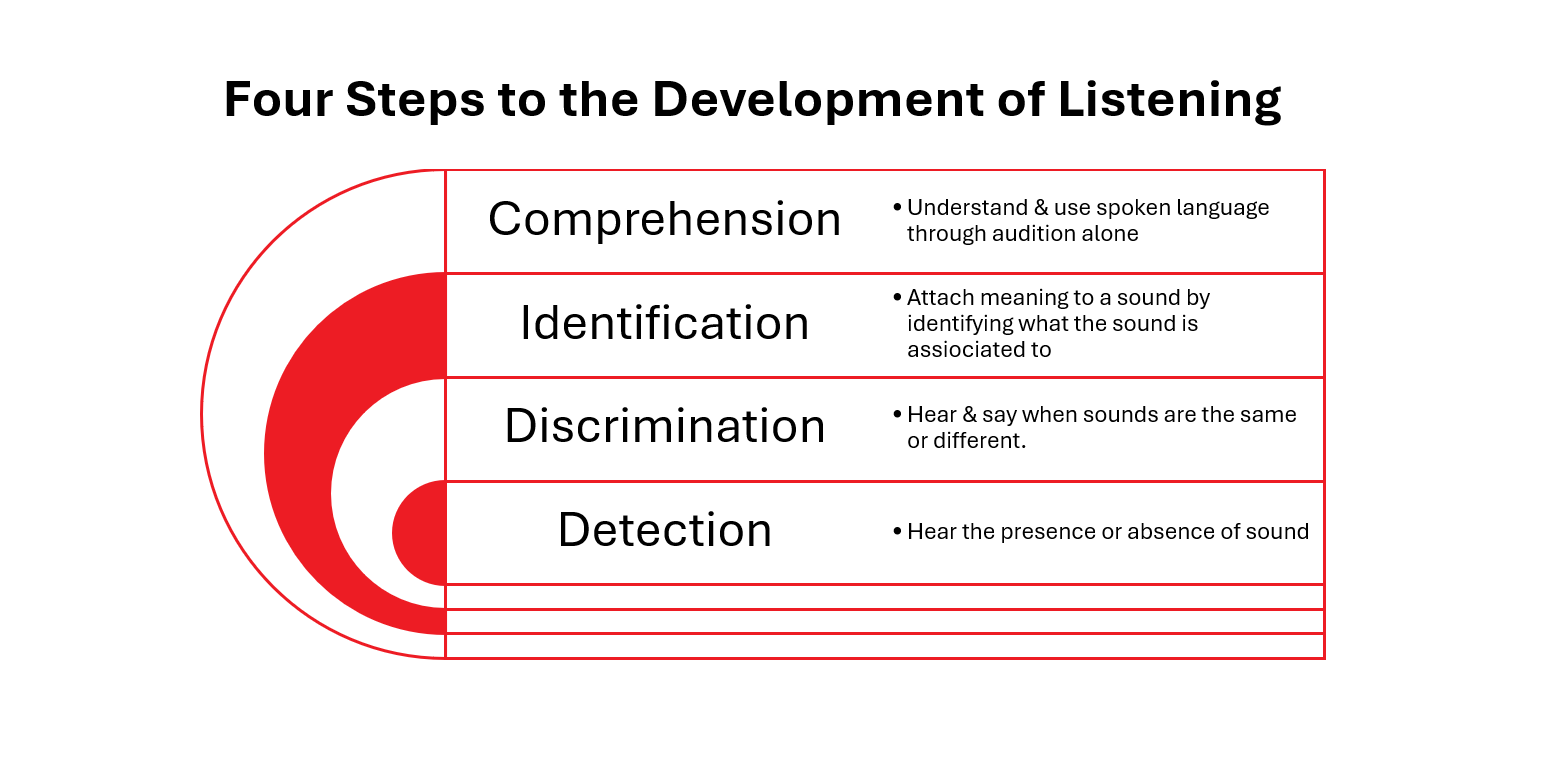
Jayne Simpson Allen
Published Jul 07, 2025
EARS Test Battery: A Digital Resource for Assessing Hearing in Children
Hearing professionals can use the EARS® (Evaluation of Auditory Responses to Speech) test battery to assess the auditory skills of children with hearing loss. Delivering a robust framework for tracking progress and informing developmentally appropriate goals, EARS is now available for download as a digital resource in several languages.

The EARS® (Evaluation of Auditory Responses to Speech) test battery can be used as a foundation in assessing auditory skills of children with hearing loss, and thereafter for setting cochlear implant rehabilitation goals.
Seven tests of differing linguistic levels and complexity which follow Norm Erber’s auditory hierarchy from detection to comprehension make the test battery suitable for use with children of different ages and stages.
Originally developed by Diane Allum-Mecklenburg, then revised by Barbara Esser-Leyding and Ilona Anderson, this comprehensive tool is designed for evaluating children’s capability to comprehend the meaning of sounds and spoken words and sentences.
MED-EL is pleased to announce that it has transformed EARS® into a digital resource, easily downloadable worldwide, and available in multiple languages, including Arabic, French, German, Spanish, and Tamil.
- 1 The EARS® Assessment Process
- 2 Listening Development Stages
- 3 Listening Progress Profile (LiP)
- 4 Monosyllabic-Trochee-Polysyllabic (MTP)
- 5 Closed-Set Monosyllabic Words
- 6 Closed-Set Sentence Test
- 7 Common Objects Token Test (COT)
- 8 Open-Set Monosyllabic Words
- 9 Glendonald Auditory Screening Procedure (GASP)
- 10 Meaningful Auditory Integration Scale (MAIS)
- 11 Meaningful Use of Speech Scale (MUSS)
- 12 Progress Tracking Over Time With EARS
The EARS® Assessment Process
The EARS® battery is intended for children aged 3 to 10, though it can be adapted for other age groups based on professional judgment. It assesses auditory skills for detection, discrimination, identification, and comprehension. The assessments can be applied pre and post-implantation, delivering a robust framework for tracking progress, pinpointing a child’s current level of function, and informing developmentally appropriate goals.
Results from the closed and open-set tests can help determine ways to structure cochlear implant rehabilitation sessions, as in whether a child needs more support with fundamental listening tasks or is ready for more complex language activities.
The EARS Test Battery Components
The battery includes seven speech perception tests and two questionnaires. The tests are divided into closed-set and open-set tasks:
- Closed-Set Tasks: These involve a limited range of response options, such as single words, pictures, or objects. They are particularly useful for young children and those with limited language.
- Open-Set Tasks: These tests are more complex, with no alternative response options, offering a precise evaluation of functional speech perception.
The included questionnaires for caregivers complement the tests, especially for younger children who may not engage in formal testing. They provide insights into the child’s behavior in real-world listening, enriching the overall assessment. This helps align therapy goals with functional outcomes in daily life.
Flexibility in Administration
The hierarchical structure of the EARS® battery allows for flexibility. Tests can be administered in any order, moving from closed-set to open-set or from easier to more difficult tasks.
Listening Development Stages

The EARS® tests are organized according to Dr. Norm Erber’s process of four steps to the development of listening:
- Detection: Recognizing the presence or absence of sound.
- Discrimination: Differentiating between sounds.
- Identification: Associating sounds with their sources or linking words to pictures or objects.
- Comprehension: Understanding connected speech using auditory cues alone.
EARS Test Battery: Closed-Set Tasks
Listening Progress Profile (LiP)
The Listening Progress Profile (LiP) was adapted from a test developed by Sue Archbold. It provides a caregiver-rated profile of the development of early listening skills, and primarily measures detection of speech. To some extent it measures speech discrimination as well as discrimination and identification of environmental sounds.
Monosyllabic-Trochee-Polysyllabic (MTP)
The Monosyllabic Trochee Polysyllabic Word Test (MTP) is adapted from an Erber and Alencewicz test. It requires the child to point to or repeat a word. The responses may be scored as percentage of words recognized, or percentage of words categorized by the stress pattern and/or number of syllables. Thus, even if children cannot understand the words, their ability to perceive word patterns can be evaluated.
Closed-Set Monosyllabic Words
The monosyllable test was created by Schneider, Leyrer, Pilkington & Allum in 1995. It contains a choice of word lists, and selection depends upon the child’s ability and familiarity with the vocabulary.
Note that translation to other languages which have fewer meaningful monosyllabic words in young children’s vocabularies may change the test words to monosyllabic or bisyllablic.
Closed-Set Sentence Test
The closed-set sentences test was adapted from a Tyler and Holstad publication. Co-articulation in sentences makes word boundaries less precise and this requires the listener to make decisions about speech in a continuous manner.
EARS® authors’ findings suggested that the difference in memory and linguistic skill was too large between the original two levels so two extra levels were added. A child needs an auditory memory of 2-3 items to be able to complete this test.
Common Objects Token Test (COT)
The Common Objects Token test was developed specifically for children who are deaf or hard of hearing by Plant and Moore and adapted for the purposes of EARS® by Anderson, Martin, Costa, Bailey, Plant, and Pitterl. It includes a Level 1 quick screener and a Level 2 in-depth analysis, and is a complex closed-set test using a variation of objects and instruction.
Note that the Common Objects Token Test is also available from MED-EL as a stand-alone test download.
EARS Test Battery: Open-Set Tasks
Open-Set Monosyllabic Words
Schneider, Leyrer, Pilkington, and Allum developed an open-set monosyllable test designed to assess the identification of monosyllables in a Consonant-Vowel-Consonant (CVC) structure.
It consists of two lists, each containing 10 words, with balanced phoneme distribution across both lists. The test yields two distinct scores: one for the correct identification of phonemes and another for the correct identification of words.
Glendonald Auditory Screening Procedure (GASP)
Dr. Norm Erber developed the Glendonald Auditory Screening Procedure (GASP), and one subtest, which focuses exclusively on comprehension of common WH-questions, is included in EARS®.
In this subtest, children are asked either to repeat or answer a question which means it is a semi-closed task. The questions are the same, but children’s responses will vary.
Meaningful Auditory Integration Scale (MAIS)
The Meaningful Auditory Integration Scale (MAIS) questionnaire was developed by Robbins, Renshaw & Berry as a measure of speech understanding in everyday environments as there is often a discrepancy between a child’s performance on structured auditory tests in clinics and listening behaviors in their daily surroundings. It is recommended to be administered in interview format in the first instance, but thereafter can be sent by email.
Meaningful Use of Speech Scale (MUSS)
The MUSS is a closed questionnaire developed by Robins and Osberger. It aims to assess spoken language use in children. Conducting the MUSS requires interviews with parents or caregivers, assessing their child’s use of speech in natural contexts. It assesses a child’s use of speech and spoken language, and their ability to modify what they say to improve a listener’s comprehension.
The EARS Test Battery: A Tool for Consistent Progress Tracking Over Time
It is important to remember that evaluating a child’s auditory skills using a battery of tests is a foundational step in cochlear implant rehabilitation.
Testing helps with establishing a baseline. Knowing the child’s current ability helps identify strengths and areas needing support so you can set realistic, measurable goals based on actual performance rather than assumptions. Repeating the battery periodically shows whether the child’s skill level is changing.
The EARS® Test Battery helps professionals prioritize goals, and it allows for consistent tracking of progress over time. This supports data-driven decisions about when to advance goals or adjust strategies.
Some of the skills tested are foundational (e.g., sound detection) and need to be addressed before others (e.g., comprehension), so goals can be sequenced logically, building on the child’s mastered skills. The clear framework of the EARS® battery also encourages shared goal setting with families and educational teams.
Professionals can enroll for free on myMED-EL to find the course which gives learners an understanding of EARS® and select the test materials they wish to download at no cost.
The digital transformation of the EARS® test battery ensures that it remains an invaluable tool for professionals worldwide, facilitating the assessment and rehabilitation of children with hearing loss.
References
-
[1]
Allen, M. C., Nikolopoulos, T. P., & O’Donoghue, G. M. (1998). Speech intelligibility in children after cochlear implanation. Otology & Neurotology, 19(6), 742-746.
-
[2]
Alves, M., et al. (2014). Adaptação da bateria de testes EARS ao português europeu. Acta Médica Portuguesa, 27(1), 23–32.
-
[3]
Archbold, S. (1996). Organisation of the Nottingham Paediatric Cochlear Implant Programme. Central East European Journal, 1(1), 20–27.
-
[4]
Bishop, D. V. (2003). The children’s communication checklist (CCC-2): CCC-2 manual (2nd ed.). London: Harcourt Assessment.
-
[5]
Ching, T. Y., & Hill, M. (2007). The parents’ evaluation of aural/oral performance of children (PEACH) scale: Normative data. Journal of the American Academy of Audiology, 18(03), 220-235.
-
[6]
Erber, N. P. (1982). Auditory Training. Washington, DC: Alexander Graham Bell Association for the Deaf.
-
[7]
Erber, N. P., & Alencewicz, C. M. (1976). Audiologic evaluation of deaf children. Journal of Speech and Hearing Disorders, 41, 256–267.
-
[8]
Esser-Leyding, B. & Anderson, I. (2012). EARS® (Evaluation of Auditory Responses to Speech): An Internationally Validated Assessment Tool for Children Provided with Cochlear Implants. ORL, 74(1), 42–51. https://doi.org/10.1159/000335054
-
[9]
Robbins, A. M., & Osberger, M. J. (1992). Meaningful use of speech scale. Indianapolis: Indiana University School of Medicine.
-
[10]
Robbins, A. M., Renshaw, J. J., & Berry, S. W. (1991). Evaluating meaningful auditory integration in profoundly hearing-impaired children. American Journal of Otology, 12(Suppl), 114–150.
-
[11]
Schneider, A., Leyrer, M., Pilkington, M. C., & Allum, D. (1995). Monosyllable Open-Set Test. Innsbruck: MED-EL.
-
[12]
Schneider, A., Leyrer, M., Pilkington, M. C., & Allum, D. (1996). Monosyllabic Closed-Set Test. Innsbruck: MED-EL.
-
[13]
Toe, D., Mood, D., Most, T., Walker, E., & Tucci, S. The Assessment of Pragmatic Skills in Young Deaf and Hard of Hearing Children. Pediatrics, 2020;146 (Supplement_3): S284–S291.
-
[14]
Tyler, R. S., & Holstad, B. A. (1976). A closed-set speech perception test for hearing-impaired children. Iowa City: Department of Otolaryngology.
References

Jayne Simpson Allen
Jayne Simpson Allen, Dip T., B Ed., M Ed., C.F., LSLSCert.AVT® commenced work as a Rehabilitation Specialist with MED-EL in 2024. She is the recipient of a Churchill Fellowship, and has worked as an educator, advisor, therapist, and mentor in the field of hearing loss and deafness for over 30 years. Prior to her move to Austria, she lived and worked in Australia and New Zealand, and mentored professionals in Listening and Spoken Language specialization worldwide. She volunteers on the AGBell Academy Board, is a regular presenter at AGBell Symposiums, and collaborated as an author in the book 101 FAQs about Auditory-Verbal Practice.
Was this article helpful?
Thanks for your feedback.
Sign up for newsletter below for more.
Thanks for your feedback.
Please leave your message below.
CTA Form Success Message
Send us a message
Field is required
John Doe
Field is required
name@mail.com
Field is required
What do you think?
The content on this website is for general informational purposes only and should not be taken as medical advice. Please contact your doctor or hearing specialist to learn what type of hearing solution is suitable for your specific needs. Not all products, features, or indications shown are approved in all countries.

Jayne Simpson Allen
Jayne Simpson Allen, Dip T., B Ed., M Ed., C.F., LSLSCert.AVT® commenced work as a Rehabilitation Specialist with MED-EL in 2024. She is the recipient of a Churchill Fellowship, and has worked as an educator, advisor, therapist, and mentor in the field of hearing loss and deafness for over 30 years. Prior to her move to Austria, she lived and worked in Australia and New Zealand, and mentored professionals in Listening and Spoken Language specialization worldwide. She volunteers on the AGBell Academy Board, is a regular presenter at AGBell Symposiums, and collaborated as an author in the book 101 FAQs about Auditory-Verbal Practice.

Jayne Simpson Allen
Jayne Simpson Allen, Dip T., B Ed., M Ed., C.F., LSLSCert.AVT® commenced work as a Rehabilitation Specialist with MED-EL in 2024. She is the recipient of a Churchill Fellowship, and has worked as an educator, advisor, therapist, and mentor in the field of hearing loss and deafness for over 30 years. Prior to her move to Austria, she lived and worked in Australia and New Zealand, and mentored professionals in Listening and Spoken Language specialization worldwide. She volunteers on the AGBell Academy Board, is a regular presenter at AGBell Symposiums, and collaborated as an author in the book 101 FAQs about Auditory-Verbal Practice.



